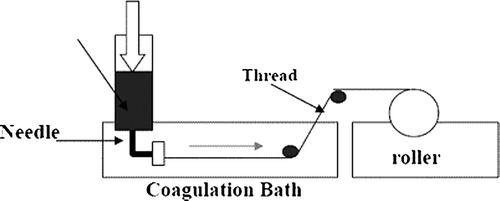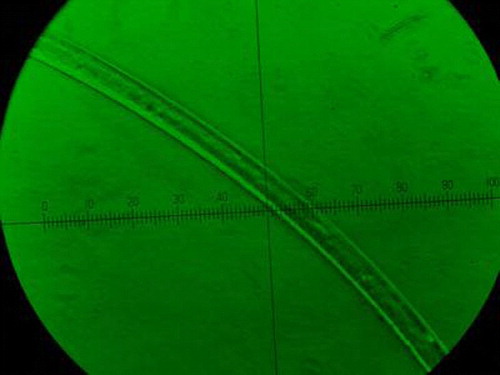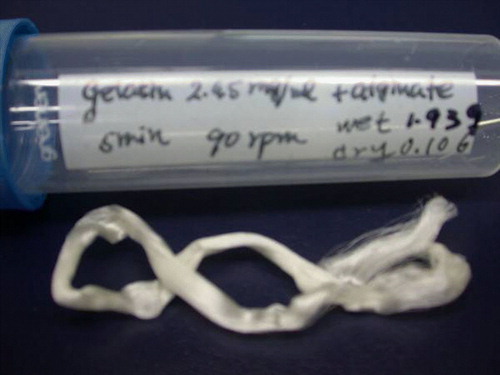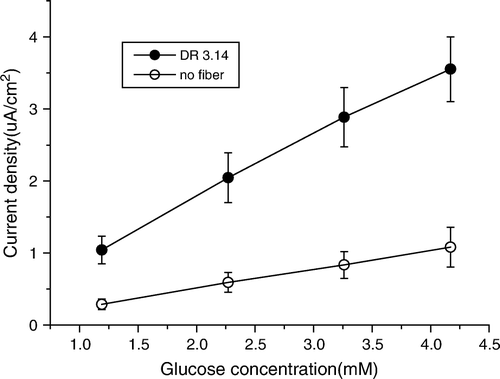Figures & data
Figure 1. Apparatus of wet spinning process. An aqueous solution containing 2.45 mg/ml gelatin and 1.5 wt% alginate was loaded in the syringe and extruded into the coagulation bath (2%w/v CaCl2).

Figure 3. Wet spinning fiber of gelatin/alginate seen under optical microscope (from draw ratio of 3.14).



